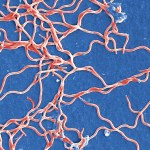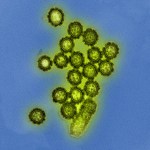antibiotics
In pseudomedicine, fake diseases predominate. Basically, fake diseases are diseases that do not exist in conventional medicine as diagnostic entities because there does not exist sufficient sufficient evidence to support them as one or there exists compelling evidence that they are not. Naturopaths, for instance, like to diagnose people with "adrenal fatigue," which is one of the prototypical "fake diseases." Basically, it involves a constellation of vague symptoms that may include a combination of several of the following: fatigue, inability to handle stress, cravings for salty foods,…
Most news on the dangers of antibiotic-resistant infections focus on adults. But children are very much at risk too. In fact, a recent study found that U.S. children have experienced a 700 percent surge in infections caused by particular bacteria that’s both resistant to multiple antibiotics and responsible for growing numbers of serious bacterial infections in kids.
“These organisms are scary, they’re hard to treat and respond to few antibiotics…and it’s the type of antibiotic resistance that’s capable of spreading itself to adjacent bacteria even if those bacteria haven’t been exposed to…
If you grew up, as I did, a child of the 1970s in the US (I graduated from high school in 1980), you probably couldn’t escape the influence of Kris Kristofferson. He was big, and he was at his biggest during the 1970s, pumping out country music and mainstream hits, appearing in movies, and generally rocking an awesome beard. Anyway, the 1980s came, and Kris Kristofferson’s career went. Well, it didn’t exactly disappear. Kristofferson continued to work and appear in movies, and his records still sold fairly well. However, he was never again as big as he was in the 1970s.
It turns out that…
During the holiday season, Kim, Liz and I are taking a short break from blogging. We are posting some of our favorite posts from the past year. Here’s one of them, originally posted on May 27, 2015:
by Kim Krisberg
For more than a decade, biologist Mariam Barlow has been working on the theory that administering antibiotics on a rotating basis could be a solution to antibiotic resistance. After years of research, Barlow had lots of data, but she needed a more precise way to make sense of it all — something that was so specific it could easily be used to treat patients. So, she joined…
Whenever I point out that a very common thread of "thought"—if you can call it "thought"—in alternative medicine is nothing more than germ theory denialism, the usual reaction is incredulity. Newbies who haven't encountered quacks before invariably do a double take when I inform them that germ theory denialism is a thing, particularly among antivaccine activists. (After all, vaccines don't make sense if microorganisms don't cause disease.) Yet, time and time again I find examples of quacks who deny that disease is a consequence of infection. In fact, some go so far as to try to argue in the…
When finding a female scientists' data turns into an archeological treasure hunt.
A few months ago, I decided it would be interesting to celebrate various scientific contributions by making images of chemical / molecular structures in the Molecule World iPad app and posting them on Twitter (@MoleculeWorld). Whenever I can, I like to highlight scientific contributions from women on their birthdays. Tomorrow's post will feature Dr. Isabella Karle, an x-ray crystallographer who worked on the Manhattan project and solved structures of interesting molecules like…
I like to point out from time to time that arguably the most striking difference between science-based medicine (and the evidence-based medicine from which we distinguish it) and alternative medicine, "complementary and alternative medicine" (CAM), or (as it's called now) "integrative medicine" is a concerted effort to change practice for the better based on science and evidence. In other words, in SBM, we are continually doing studies to improve practice. These studies take on two general forms: Comparing new treatments with old to determine if the new treatments work better and, as has…
A pig flying at the Minnesota state fair. Picture by TCS.
I've been involved in a few discussions of late on science-based sites around yon web on antibiotic resistance and agriculture--specifically, the campaign to get fast food giant Subway to stop using meat raised on antibiotics, and a graphic by CommonGround using Animal Health Institute data, suggesting that agricultural animals aren't an important source of resistant bacteria. Discussing these topics has shown me there's a lot of misunderstanding of issues in antibiotic resistance, even among those who consider themselves…
A common question, rhetorical or otherwise, that skeptics are asked about alternative medicine is, "What's the harm?" It's seemingly an effective ploy for some modalities, so much so that years ago Tim Farley felt obligated to try to answer the question on a website (whatstheharm.net) that catalogues examples of the harm alternative medicine, supernatural and paranormal beliefs, and other pseudoscience do. After all, most homeopathy (at least anything diluted greater than around 12C, at least) is water, without any remaining remedy, effective or otherwise. On the other hand, some homeopathic…
For more than a decade, biologist Mariam Barlow has been working on the theory that administering antibiotics on a rotating basis could be a solution to antibiotic resistance. After years of research, Barlow had lots of data, but she needed a more precise way to make sense of it all — something that was so specific it could easily be used to treat patients. So, she joined forces with a team of mathematicians. And the amazing results could help solve an enormous, worldwide problem.
In a nutshell, the team of biologists and mathematicians developed a software program that generates a road map…
Best American Science and Nature Writing 2014, edited by Pulitzer-winning writer and professor Deborah Blum, features two pieces that remind us how public-health interventions can become less effective if we as a society don't use them appropriately -- and, based on the spelling of the authors' last names, they're right next to each other in the anthology. Maryn McKenna's "Imaging the Post-Antibiotics Futre," published in Medium, and Seth Mnookin's "The Return of Measles" from the Boston Globe Magazine warn that diseases we thought we'd conquered could easily return and become major killers…
Eleven years ago, two scientists made a bet. One scientist wagered that a new type of antimicrobial agent, called antimicrobial peptides, would not elicit resistance from bacterial populations which were treated with the drugs. Antimicrobial peptides are short proteins (typically 15-50 amino acids in length) that are often positively charged. They are also a part of our body's own innate immune system, and present in other species from bacteria to plants. It is thought that these peptides work primarily by disrupting the integrity of the bacterial cell, often by poking…
A few of the recent pieces I've liked:
Ken Ward Jr. in the Charleston (WV) Gazette: Why wasn't there a plan? Key players knew of potential for Elk River spill and State ignored plan for tougher chemical oversight (also check out opinions on the West Virginia chemical release from Deborah Blum at Elemental and Tom O'Connor at National COSH)
Jia Tolentino interviews MacArthur "Genius" Grant-winning statistician Susan Murphy at The Hairpin. ("Susan Murphy is a statistician developing new methodologies to evaluate treatments for chronic and relapsing disorders like depression and substance abuse…
On Aetiology, Tara C. Smith continues her series on the science of The Walking Dead, explaining how diseases spread and how they might cause zombiism. One thing that would be observed in any real contagion would be an incubation period— the time between when a virus (for example) enters your body and you start showing symptoms of infection. For a virus like the flu, this could be about two days during which you don’t feel sick but could still be infecting people around you—even if you don’t bite them. Tara also expresses nerd rage at the show's "doctors" pursuing antibiotics to…
It's a sad day for the reality-based community, within the critiques of Jane Goodall's new book 'Seeds of Hope' we find that in addition to plagiarism and sloppiness with facts, she's fallen for anti-GMO crank Jeffrey Smith's nonsense.
When asked by The Guardian whom she most despised, Goodall responded, “The agricultural company Monsanto, because I know too much about GM organisms and crops.” She might know too much, but what if what she knows is completely wrong?
Many of the claims in Seeds of Hope can also be found in Genetic Roulette: The Documented Health Risks of Genetically Engineered…
Last week, CDC Director Thomas Frieden opened a press briefing by saying, "It's not often that our scientists come to me to say that we have a very serious problem, and we need to sound an alarm." What scientists found, and reported in CDC's Morbidity and Mortality Weekly Report, is that a growing proportion of Enterobacteriaceae (a family of bacteria known for causing hospital-acquired infections) are resistant to carbapenems, a type of antibiotics that's typically been the last line of attack against stubborn infections. Frieden explained why these carbapenem-resistant Enterobacteriaceae (…
Second of five student guest posts by Nai-Chung N. Chang
Tuberculosis (TB) is a major disease burden in many areas of the world. As such, it was declared a global public health emergency in 1993 by the World Health Organization (WHO). It is a bacterial disease that is transmitted through the air when an infected individual coughs, sneezes, speaks, or sings. However, not all individuals who contract the disease will display symptoms. This separates the infected into two categories, latent and active. Latent individuals are non-infectious and will not transmit the disease, whereas active…
This week is Get Smart About Antibiotics Week, and CDC is promoting awareness about when these important drugs should and shouldn't be used. Overuse of antibiotics speeds the development of antibiotic-resistant bacteria, and infections from these bacteria are much harder to treat.
Many of our readers are probably already familiar with CDC's message, which boils down to the fact that antibiotics don't cure viral infections (colds, flu, most bronchitis) and the reminder that when you are prescribed antibiotics, you need take the entire course of drugs rather than stopping once you feel better.…
C. difficile is an enormous clinical problem to which, unfortunately, we physicians can contribute, as ZDoggMD tells us in Dawn of the C. Diff:
You go to the doctor to talk ‘em in
To givin’ antibiotics for your coughin’ thing
They explain that the pain in your throat’s a virus
“Antibiotics are not desirous!”
But you ain’t hearing this, you get all in they face
“Why, this is malpractice, a total disgrace!
I’m not leaving this place without a script, my man!”
Frustrated and berated, doc throws up his hands
The result? Well, let this video tell the tale:
If you haven't yet read Maryn McKenna's riveting Atlantic article "How Your Chicken Dinner is Creating a Drug-Resistant Superbug," you should. McKenna, working with the with the Food and Environment Reporting Network, has delved into research that's been accumulating about the association between the extensive use of antibiotics in poultry and the increase in drug-resistant urinary tract infections.
A quick bit of background: For decades, health officials and advocates have been concerned about the overuse of antibiotics. The more you use an antibiotic, the more quickly bacteria resistant to…







